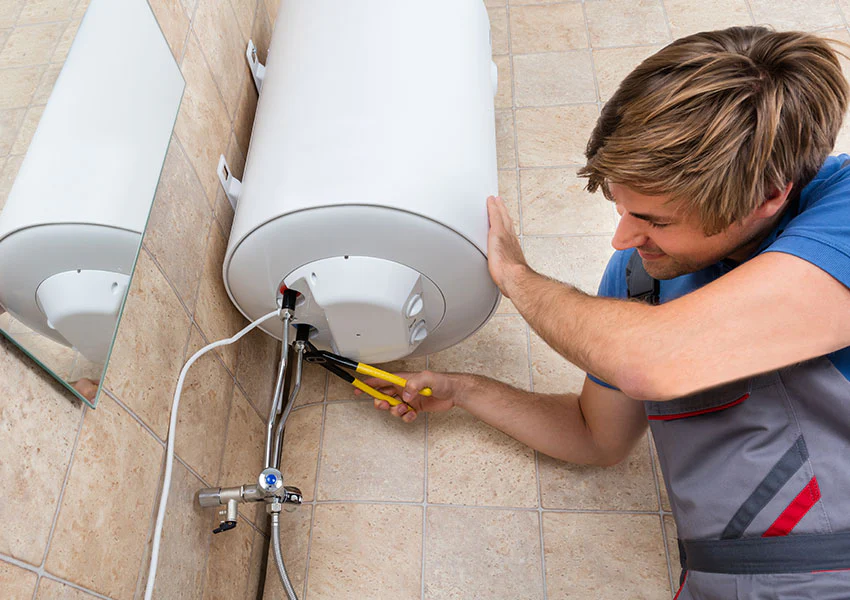Maintaining Your Home's Hot Water System: Key GuidelinesTips on How to Keep Your Home's Hot Water System in Good Condition
Maintaining Your Home's Hot Water System: Key GuidelinesTips on How to Keep Your Home's Hot Water System in Good Condition
Blog Article
What are your opinions with regards to Tips For Maintaining Your Hot Water Heater?

Warm water is important for day-to-day convenience, whether it's for a rejuvenating shower or washing dishes. To guarantee your warm water system runs efficiently and lasts longer, normal upkeep is essential. This article gives functional ideas and insights on how to keep your home's warm water system to prevent disruptions and pricey repair work.
Introduction
Keeping your home's hot water system might appear difficult, but with a couple of basic steps, you can guarantee it runs smoothly for several years to find. This overview covers whatever from understanding your warm water system to DIY upkeep suggestions and recognizing when to hire expert aid.
Significance of Preserving Your Warm Water System
Regular maintenance not just prolongs the lifespan of your warm water system yet also ensures it runs successfully. Neglecting upkeep can lead to reduced effectiveness, higher power costs, and even premature failure of the system.
Indicators Your Hot Water System Demands Upkeep
Knowing when your hot water system requires focus can prevent major problems. Watch out for indicators such as irregular water temperature, strange noises from the heating unit, or corroded water.
Comprehending Your Warm Water System
Prior to diving into upkeep jobs, it's helpful to understand the basic elements of your warm water system. Normally, this consists of the hot water heater itself, pipelines, anode poles, and temperature level controls.
Month-to-month Upkeep Tasks
Normal monthly checks can aid catch minor problems prior to they intensify.
Purging the Hot Water Heater
Purging your hot water heater gets rid of debris buildup, improving efficiency and prolonging its life.
Monitoring and Changing Anode Rods
Anode poles stop deterioration inside the container. Evaluating and replacing them when worn is important.
Checking and Changing Temperature Level Settings
Changing the temperature settings guarantees optimal performance and safety.
DIY Tips for Maintenance
You can do a number of maintenance tasks on your own to maintain your warm water system in top condition.
Checking for Leaks
Regularly check pipelines and connections for leaks, as these can result in water damage and greater costs.
Checking Pressure Alleviation Valves
Examining the stress relief valve ensures it functions correctly and protects against too much stress accumulation.
Insulating Pipelines
Shielding hot water pipes reduces warmth loss and can conserve energy.
When to Call a Specialist
While DIY maintenance is beneficial, some concerns call for expert knowledge.
Complex Concerns Needing Professional Help
Instances include major leakages, electrical problems, or if your hot water heater is constantly underperforming.
Regular Expert Maintenance Conveniences
Professional upkeep can include thorough examinations, tune-ups, and making sure compliance with safety and security criteria.
Final thought
Routine maintenance of your home's warm water system is important for performance, durability, and cost financial savings. By following these ideas and knowing when to look for expert help, you can make certain a reputable supply of hot water without unforeseen disruptions.
How to Maintain an Instant Hot Water Heater
Before tinkering with your hot water heater, make sure that it’s not powered on. You also have to turn off the main circuit breaker and shut off the main gas line to prevent accidents. Also turn off the water valves connected to your unit to prevent water from flowing into and out of the appliance. 2. When you’re done, you have to detach the purge valves’ caps. These look like the letter “T” and are situated on either side of the water valves. Doing so will release any pressure that has accumulated inside the valves while at the same time avoid hot water from shooting out and burning your skin. 3. When the purge valves’ caps are removed, you have to connect your hosing lines to the valves. Your unit should have come with three hoses but if it didn’t, you can purchase these things from any hardware or home repair shops. You can also get them from retail stores that sell water heating systems. Read the user’s manual and follow it to complete this task properly. When the hosing lines are connected, open the purge port’s valves. 4. You should never use harsh chemical cleaners or solutions when cleaning your unit. Make use of white vinegar instead. It should be undiluted and you’ll probably use about 2 gallons. 5. Now flush your water heater. This task should probably take about 40 minutes. We can’t give you specific directions for this because the procedure is carried out depending on the type, model and brand of your heater. With that being said, refer to the user’s manual. 6. When you’re done draining the unit, you have to turn off the purge port valves again. Remove the hosing lines that you earlier installed on each of the water valves. Put the valve caps (purge port) back in their respective places and be very careful so as not to damage the rubber discs that are found inside these caps. 7. Now that everything’s back in place, check your user’s manual again to find out how to reactivate your water heating system. 8. Once it is working, turn one of your hot water faucets on just to let air pass through the heater’s water supply pipes. Leave the tap on until water flows smoothly out of it. https://www.orrplumbing.com/blog/2014/september/how-to-maintain-an-instant-hot-water-heater/

I found that review on What Kind of Maintenance Do Water Heaters Need? when scouting around the web. Please take a moment to distribute this article if you enjoyed reading it. Many thanks for going through it.
Click For More Info Report this page